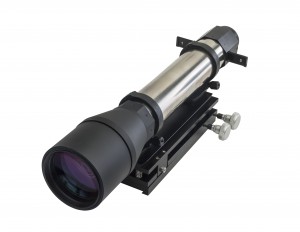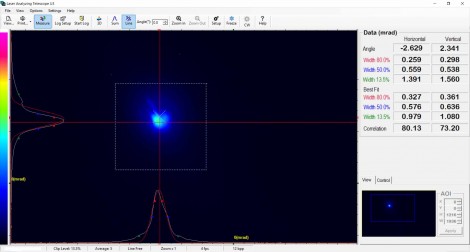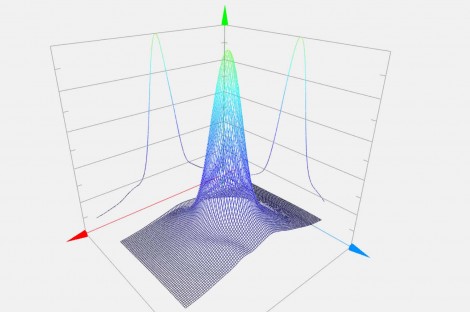
Lasers with near-perfect collimated beams are very difficult to characterize with high accuracy. Usually, characterization involves measuring the beam at several positions along the propagation axis. This could prove to be very tricky because variations along the beams are negligible with high collimated beams, and it is further complicated by measurement noise. Moreover, measuring over long distances is impractical for most laser applications, because the space is often constrained and additional problems such as air turbulence may occur.

Beam Profile screenshot for 1310 nm collimated laser. Right hand: Divergence and its distribution
Another popular approach is to measure the far field beam profile using a lens with a beam profiler at its focal length. The far field beam profile created in such a way could be analyzed, and the total beam collimation could be calculated from a relatively simple formula: Ø=d/f where f is the focal length of the system. Not only can the degree of collimation be calculated, but the full far field behavior of the beam could be discerned. Furthermore, additional information such as the relative angle between the testing device and the incoming beam direction could be analyzed.
This method could be highly efficient; however, it is not free from complications including marginal resolution, limited accuracy and poor repeatability. To overcome these challenges, a special instrument for measuring highly collimated beams over significant power level variations was designed that yields a resolution of about 1 microradian and offers accuracy that is better than 10 microradians.
Accommodating customers' needs
Typical customers' requirements in this field are found in applications such as range-finding pulsed lasers- most of which have a wavelength of 1060 nm or eye safe laser of 1550 nm. Those lasers are used in the area of range-finding for applications ranging from golf to military; usually used for target designation and extreme distances. Common specifications are divergence better than 1 miliradian, (typically better than 0.5 miliradian) with high pulsed wattage. For accurately defining the laser collimation and accuracy, a laser analyzing telescope was designed that is capable of performing those measurements over a wide power range.

3D reconstruction of laser beam
Laser analyzing telescope
To meet customers' requirements, Duma Optronics designed a Laser Analyzing Telescope (LAT), based on a combination of an optical telescope with a beam profiler, thus allowing measurement of multiple beams simultaneously while calculating divergence and angular deviation. The LAT has a focal length of 600 mm and an aperture of 100 mm and can be adjusted via pan ilt screws. The system is equipped with a magnetic filter slit that allows beam attenuation in order to use the beam profiler efficiently.
Prior to the development of the LAT, laser divergence characterization was a daunting mission, especially when testing in the near IR. Previously it required an intricate setup, involving optics, mirrors and detectors. This new LAT solves many customers' needs in one easy-to-use solution.
Written by Oren Aharon, CTO of Duma Optronics































 Back to Features
Back to Features

























